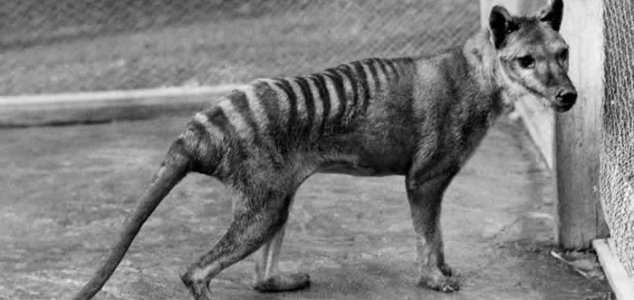Creatures, Myths & Legends
January 31, 2021 · 14 comments
14 comments

Is the thylacine really extinct ? Image Credit: Benjamin A. Sheppard
Sporadic reports of alleged thylacines in the wild however have continued even to the present day.
But could the species still be out there or is their survival almost 100 years after their official extinction all the way back in the 1930s little more than wishful thinking at this point ?
According to a recently published study, the Tasmanian tiger probably didn't die out in the first half of the 20th Century as is commonly believed, but instead managed to hold on against all odds until the 1990s or possibly even until the early 2000s before finally succumbing to extinction.
The findings contradict the official picture and suggest that thylacines were roaming around relatively recently at a time when it was generally believed that they were long gone.
The study involved a three-year analysis of more than 1,200 sightings of Tasmanian tigers and concluded that there is still a slim chance that the species could still be out there today.
"Like the Dodo and Passenger Pigeon before it, the thylacine has become an iconic symbol of human-caused extinction," the study authors wrote.
"Even today, reports of the thylacine's possible ongoing survival in remote regions of Tasmania are newsworthy and continue to capture the public's imagination, with much debate over whether the extinction event has yet occurred and if so, when?"
"We show, using a unique and robust spatio-temporal mapping and modelling approach, underpinned by the world's first sightings database (from 1910-present day), that the thylacine likely persisted until the late 20th century, with some possibility of ongoing survival."
Source: biorxiv.org | Comments (14)
Thylacines survived until the 90s, study claims
By T.K. RandallJanuary 31, 2021 ·
 14 comments
14 comments
Is the thylacine really extinct ? Image Credit: Benjamin A. Sheppard
A new study has suggested that the Tasmanian tiger may have survived all the way up until relatively recently.
One of the best known recent examples of a species wiped out by human hunting practices, the thylacine was a distinctive carnivorous marsupial native to Australia, Tasmania and New Guinea.Sporadic reports of alleged thylacines in the wild however have continued even to the present day.
But could the species still be out there or is their survival almost 100 years after their official extinction all the way back in the 1930s little more than wishful thinking at this point ?
According to a recently published study, the Tasmanian tiger probably didn't die out in the first half of the 20th Century as is commonly believed, but instead managed to hold on against all odds until the 1990s or possibly even until the early 2000s before finally succumbing to extinction.
The findings contradict the official picture and suggest that thylacines were roaming around relatively recently at a time when it was generally believed that they were long gone.
"Like the Dodo and Passenger Pigeon before it, the thylacine has become an iconic symbol of human-caused extinction," the study authors wrote.
"Even today, reports of the thylacine's possible ongoing survival in remote regions of Tasmania are newsworthy and continue to capture the public's imagination, with much debate over whether the extinction event has yet occurred and if so, when?"
"We show, using a unique and robust spatio-temporal mapping and modelling approach, underpinned by the world's first sightings database (from 1910-present day), that the thylacine likely persisted until the late 20th century, with some possibility of ongoing survival."
Source: biorxiv.org | Comments (14)

The Unexplained Mysteries
Book of Weird News
AVAILABLE NOW
Take a walk on the weird side with this compilation of some of the weirdest stories ever to grace the pages of a newspaper.
Click here to learn more

Support us on Patreon
BONUS CONTENTFor less than the cost of a cup of coffee, you can gain access to a wide range of exclusive perks including our popular 'Lost Ghost Stories' series.
Click here to learn more
Russia and the War in Ukraine
Spirituality, Religion and Beliefs
United States and the Americas
Earth, Natural Disasters and the Environment
Total Posts: 7,775,877 Topics: 325,400 Members: 203,869
Not a member yet ? Click here to join - registration is free and only takes a moment!
Not a member yet ? Click here to join - registration is free and only takes a moment!


































Please Login or Register to post a comment.